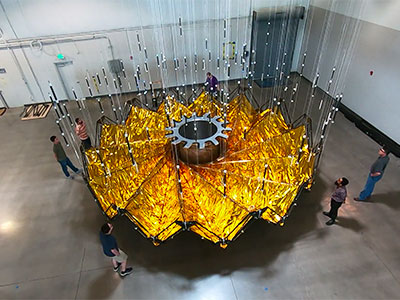
Breaking News
 Bipartisan Backlash Against AI: As China Forges Ahead Unchecked, America Must Race...
Bipartisan Backlash Against AI: As China Forges Ahead Unchecked, America Must Race...
 Special Report: Ireland On The Brink Of Collapse
Special Report: Ireland On The Brink Of Collapse
 Watch: TikTok Liberal Harry Sisson Schooled During Piers Morgan Appearance
Watch: TikTok Liberal Harry Sisson Schooled During Piers Morgan Appearance
 Popular protein powders contain up to 16x more lead than deemed safe
Popular protein powders contain up to 16x more lead than deemed safe
Top Tech News
 Future of Satellite of Direct to Cellphone
Future of Satellite of Direct to Cellphone
 Amazon goes nuclear with new modular reactor plant
Amazon goes nuclear with new modular reactor plant
 China Is Making 800-Mile EV Batteries. Here's Why America Can't Have Them
China Is Making 800-Mile EV Batteries. Here's Why America Can't Have Them
 China Innovates: Transforming Sand into Paper
China Innovates: Transforming Sand into Paper
 Millions Of America's Teens Are Being Seduced By AI Chatbots
Millions Of America's Teens Are Being Seduced By AI Chatbots
 Transhumanist Scientists Create Embryos From Skin Cells And Sperm
Transhumanist Scientists Create Embryos From Skin Cells And Sperm
 You've Never Seen Tech Like This
You've Never Seen Tech Like This
 Sodium-ion battery breakthrough: CATL's latest innovation allows for 300 mile EVs
Sodium-ion battery breakthrough: CATL's latest innovation allows for 300 mile EVs
 Defending Against Strained Grids, Army To Power US Bases With Micro-Nuke Reactors
Defending Against Strained Grids, Army To Power US Bases With Micro-Nuke Reactors
Space Based Starshades Will Make Large Ground Telescopes the Most Powerful Exoplanet Finders

The Hybrid Observatory for Earth-like Exoplanets (HOEE) would convert the largest ground-based telescopes now under construction (Giant Magellan Telescope, Thirty Meter Telescope, and Extremely Large Telescope) into the most powerful planet finders yet designed. No other proposed equipment can match the angular resolution (image sharpness), sensitivity (ability to see faint objects in a given time), or contrast (ability to see faint planets near bright stars).
The large telescope is needed because Earth-like planets are extremely faint. The starshade is needed to block the glare of the host stars; the sun is 10 billion times brighter than the Earth at visible wavelengths. A starshade in an astro-stationary orbit would match position and velocity with the moving telescope, and cast a dark shadow of the star, without blocking the light of its planets. Active propulsion would maintain alignment during the observation. Adaptive optics in the telescope would compensate for atmospheric distortion of the incoming images.
The HOEE would address the highest priority recommendation of the Exoplanet Strategy report: observe reflected light from Earth-like planets with low resolution spectroscopy. This light is influenced by surface minerals, oceans, continents, weather, vegetation, and atmospheric constituents, temperature, and pressure. Observing many systems would help answer the question of why configurations like our own Solar System are rare; of the thousands of known exoplanet systems, none are quite like home, with inner rocky planets, a faint cloud of dust, an asteroid belt, and giant outer planets. Observing photosynthetic oxygen would answer the questions of whether life is rare or common, what it requires, and how long it takes to grow.

 SpaceX Heat Shield and Starship Mass Production
SpaceX Heat Shield and Starship Mass Production

